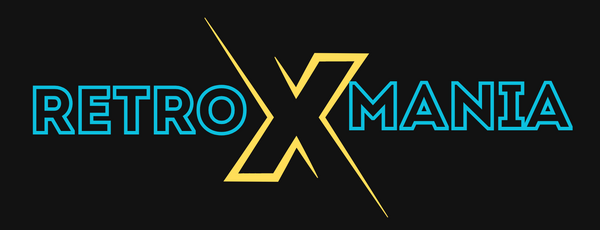Introduction
The Raspberry Pi is a popular and affordable single-board computer, ideal for retro gaming. This guide will show you how to set up and optimize your Raspberry Pi to emulate various home consoles, allowing you to relive classic video games.
What is Raspberry Pi?

Presentation
The Raspberry Pi is a small, affordable computer originally designed to encourage learning programming and computing. Its compact size and relative power make it an ideal platform for various projects, including retro gaming.
Available versions
There are several versions of the Raspberry Pi, each with different specifications. The most common are the Raspberry Pi 3 and the Raspberry Pi 4. The Raspberry Pi 4, with its faster processor and expanded memory options, is particularly well-suited for game emulation.
Why use the Raspberry Pi for Retrogaming?
Benefits
- Low Cost : Compared to other solutions, the Raspberry Pi is very affordable.
- Flexibility : It can be configured to emulate multiple consoles, making it versatile.
- Active Community : The vast community of users and developers offers a wealth of resources, tutorials, and software.
Disadvantages
- Limited power : Although the Raspberry Pi is powerful for its size, it may not handle games from newer consoles perfectly.
- Initial Setup : Installation and setup can be complex for beginners.
Installing RetroPie
What is RetroPie?
RetroPie is a Linux distribution specifically designed to turn the Raspberry Pi into a retro gaming machine. It includes several emulators for different consoles and a user-friendly interface for accessing your games.
Installation Steps
Necessary equipment
- Raspberry Pi (model 3 or 4 recommended)
- MicroSD card (at least 16 GB)
- Power supply for Raspberry Pi
- Compatible gamepad
- HDMI cable and screen
- Keyboard and mouse for initial setup
Downloading and Writing the RetroPie Image
- Download RetroPie : Go to the official RetroPie website and download the image corresponding to your Raspberry Pi model.
- Write the image to the SD card : Use a tool like Etcher to write the RetroPie image to your microSD card.
Initial configuration
- Insert the SD card : Place the microSD card into the Raspberry Pi.
- Start the Raspberry Pi : Connect the Raspberry Pi to your display via HDMI, plug in the keyboard and mouse, and then turn it on.
- Follow the on-screen instructions : Configure your controller and adjust basic settings.
Adding ROMs
ROMs are the game files needed to play through the emulator. Here's how to add them to RetroPie:
- Via USB : Copy your ROMs to a USB stick, insert it into the Raspberry Pi, and transfer the files to the appropriate directory.
- Via Network : Connect to the Raspberry Pi via a local network and transfer the ROMs directly.
Optimization and Personalization
Performance optimization
- Overclocking : Increase the Raspberry Pi's CPU frequency to improve performance, keeping in mind that this can cause overheating.
- Graphics Settings : Adjust graphics settings in emulators to find a good balance between performance and visual quality.
Customizing the interface
- Themes : Change the look of RetroPie's user interface by installing custom themes.
- Skins : Customize emulators with skins for better immersion.
Configuring the controls
- Button Remapping : Configure controls to be comfortable and intuitive.
- Additional Controllers : Add additional controllers for multiplayer.
The Best Emulators for RetroPie
PlayStation (PSX)
-
Recommended emulator: ePSXe
- High compatibility with games
- Graphical improvements available
- Quick saves and controller support
Nintendo 64
-
Recommended Emulator: Mupen64Plus
- Good compatibility and performance
- Available on multiple platforms
- Advanced settings to optimize graphics
Sega Genesis
-
Recommended Emulator: Genesis Plus GX
- High accuracy in emulation
- Support for specific features like Sega CD and 32X
- User-friendly interface
Super Nintendo (SNES)
-
Recommended emulator: Snes9x
- Excellent game compatibility
- Graphical improvements and customization options
- Fast saves and cheat support
Common Problems and Solutions
Games not starting
- Check ROMs : Make sure the ROMs are compatible and named correctly.
- Update RetroPie : Keep your RetroPie installation up to date to benefit from the latest improvements and bug fixes.
Slow performance
- Reduce graphics settings : Lower the resolution and turn off graphics filters.
- Overclocking : Try overclocking the Raspberry Pi for increased performance.
Control problems
- Remap the buttons : Check and adjust the control configuration in RetroPie settings.
- Use compatible controllers : Make sure your controllers are compatible with RetroPie.
Conclusion
Transforming a Raspberry Pi into a retro gaming machine is a rewarding experience, allowing you to rediscover classic video games with modern enhancements. By following this guide, you can configure, optimize, and customize your Raspberry Pi for an exceptional retro gaming experience. Whether you're a gaming veteran or new to the world of retro gaming, the Raspberry Pi with RetroPie offers a flexible and powerful solution for playing your favorite games.




